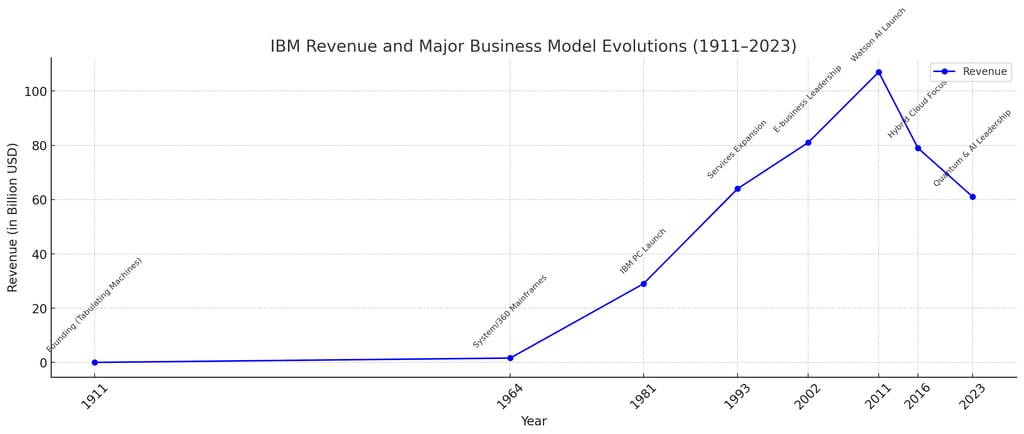IBM reinventing itself
IBM's ability to reinvent itself aligns with Senge's disciplines, particularly systems thinking and shared vision.
6/16/20252 min read


Peter Senge's concept of the "learning organization," introduced in his seminal work The Fifth Discipline, emphasizes an organization's capacity to adapt, evolve, and thrive in a rapidly changing environment. This framework is built upon five core disciplines:
Personal Mastery: Encouraging individuals to continually expand their abilities to achieve desired outcomes.
Mental Models: Challenging ingrained assumptions and generalizations to foster open-mindedness and innovation.
Shared Vision: Building a common sense of purpose and commitment among all members of the organization.
Team Learning: Promoting collective learning to enhance team capabilities and performance.
Systems Thinking: Understanding the organization as a complex system of interrelated parts, recognizing patterns and interdependencies.
These disciplines collectively contribute to an organization's ability to learn and adapt continuously, which is crucial for long-term success and resilience.
IBM's history exemplifies the principles of a learning organization. Over its more than a century-long existence, IBM has undergone multiple significant transformations to adapt to technological advancements and market shifts. These transformations include:
Tabulating Machines Era: Originating from the merger of companies specializing in tabulating equipment, IBM initially focused on mechanical data processing.
Mainframe Computing: Transitioning into electronic computing, IBM became a leader in mainframe systems, notably with the System/360 series.
Personal Computing: Embracing the personal computer revolution, IBM introduced its own PC line, adapting to the decentralized computing trend.
Services and Consulting: Shifting focus from hardware to services, IBM expanded into IT consulting and solutions, recognizing the growing demand for integrated services.
E-Business and Cloud Computing: Pioneering the concept of e-business, IBM invested in cloud technologies and services, aligning with the digital transformation of businesses.
Artificial Intelligence and Cognitive Computing: Developing AI capabilities, such as Watson, IBM positioned itself at the forefront of cognitive computing and data analytics.
Quantum Computing: Investing in quantum research, IBM aims to lead in next-generation computing technologies.
Hybrid Cloud and AI Integration: Focusing on hybrid cloud solutions and AI integration, IBM continues to evolve to meet contemporary enterprise needs.
IBM's ability to reinvent itself aligns with Senge's disciplines, particularly systems thinking and shared vision. By understanding the interconnectedness of its operations and fostering a culture of continuous learning, IBM has maintained its relevance and competitiveness.
In conclusion, the synergy between Senge's learning organization principles and IBM's adaptive strategies underscores the importance of continuous learning and flexibility in achieving enduring success.
